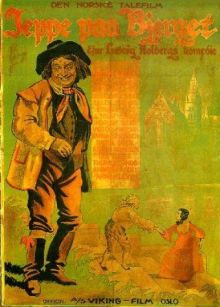Related Research Articles

Christian August Sinding was a Norwegian composer. He is best known for his lyrical work for piano Frühlingsrauschen. He was often compared to Edvard Grieg and regarded as his successor.

Princess Ragnhild, Mrs Lorentzen, was the eldest child of King Olav V of Norway and Princess Märtha of Sweden. She was the older sister of King Harald V and Princess Astrid. She was the first Norwegian royal to have been born in Norway since the Middle Ages. In 1953 she married the industrialist Erling Lorentzen, a member of the Lorentzen family of shipping magnates. In the same year they moved to Brazil, where her husband was an industrialist and a main owner of Aracruz Celulose. She lived in Brazil until her death 59 years later.

Stephan Abel Sinding was a Norwegian-Danish sculptor. He moved to Copenhagen in 1883 and had his breakthrough the same year. In 1890 he obtained Danish citizenship. In 1910 he settled in Paris where he lived and worked until his death in 1922.
Den nye lensmannen is a 1926 Norwegian drama film directed by Leif Sinding, starring Haakon Hjelde. The new sheriff (lensmann) hides a secret: he is actually a gypsy (tater). He tricks money from the locals, but he also helps two lovers unite.

Lauritz Weidemann was a Norwegian judge, civil servant and politician. He served as county governor for almost 35 years, participated at the Norwegian Constituent Assembly in 1814, and was a member of the Parliament of Norway for several periods.

Sæbjørn Buttedahl was a Norwegian stage and film actor who later found prominence as a sculptor.
Trysil-Knut is a Norwegian film from 1942. Rasmus Breistein directed this skiing melodrama during the German occupation of Norway. It tells the story of the legendary skier Knut from Trysil, an ardent patriot at the beginning of the 1800s who uses his skiing skills to prevent war from breaking out between Norway and Sweden. Knut also wins back a property that he was cheated out of and his "princess."
Til sæters is a Norwegian silent comedy film from 1924 directed by Harry Ivarson. He also wrote the screenplay based on Claus Pavels Riis's 1850 musical Til Sæters: dramatisk Idyl med Sange. The plot of the musical was very thin and mostly served as an excuse to link together various dance performances accompanied by well-known Norwegian folk melodies. Ivarson therefore added more people to the story and a little more intrigue, but retained the basic mood of the musical.
Ellen Sinding was a Norwegian actress and dancer.

Fantegutten is a Norwegian film from 1932 directed by Leif Sinding. Sinding also wrote the screenplay, which was based on Harald Meltzer's novel of the same name, published posthumously in 1873. Egil Sætren designed the sets.

Jeppe på bjerget is a Norwegian film from 1933 based on Ludvig Holberg's play Jeppe på bjerget.
Sangen til livet is a Norwegian film from 1943 based on Johan Bojer's play Sigurd Braa. It was directed by Leif Sinding. The film premiered on October 25, 1943.
Simen Mustrøens besynderlige oplevelser is a Norwegian film from 1926 based on a story by Johan Falkberget. The film was directed by Harry Ivarson with cinematography by Erling Knudsen and Johannes Bentzen. It is now considered lost.
Gullfjellet is a Norwegian film from 1941 based on Guldfjeldet, a comedy by Ove Ansteinsson about farmers tempted to invest all their money in a gold bonanza. The film was directed by Rasmus Breistein and Titus Vibe-Müller.
Ulrich Wilhelm Koren (1747–1826) was a Norwegian civil servant and politician. He served as the Bailiff of Sunnhordland and the governor of Stavanger county from 1799 until 1810.
Gjest Baardsen is a Norwegian film from 1939 directed by Tancred Ibsen. Alfred Maurstad played the title role. The film is based on the life of the outlaw Gjest Baardsen, but it is a blend of fact and fiction. The plot is taken from a chapbook published by Holger Sinding under the pseudonym Halle Sira.
Ungen is a Norwegian drama film from 1938 directed by Rasmus Breistein. The lead roles are played by Eva Sletto, Harald Heide Steen, and Ragnhild Hald. It is a film adaptation of Oskar Braaten's 1911 play Ungen: folkeliv i fire akter. A new version of the film was made in 1974 as a musical.

Ulf Selmer was a Norwegian actor and painter.
Hans Nielsen Hauge is a Norwegian film from 1961 directed by Kåre Bergstrøm. It is a dramatization of the life of the lay minister Hans Nielsen Hauge (1771–1824). The film received a lukewarm reception from Verdens Gang's reviewer, who gave it three out of six stars.
Selkvinnen is a Norwegian film from 1953. It was directed by Lauritz Falk and Per Jonson; Falk himself played the lead role in the film. The film script was written by Leif Sinding. Gunnar Sønstevold composed the music for the film.
References
- 1 2 Dyer, Richard; Vincendeau, Ginette (2013). Popular European Cinema. Abingdon, UK: Taylor and Francis. p. 190.
- ↑ Krautz, Alfred (1986). International Directory of Cinematographers, Set- and Costume Designers in Film 5: Denmark, Finland, Norway, Sweden (From the Beginnings to 1984). Munich: Saur.
- ↑ "Fjeldeventyret". Norsk filmografi. National Library of Norway. Retrieved May 24, 2019.